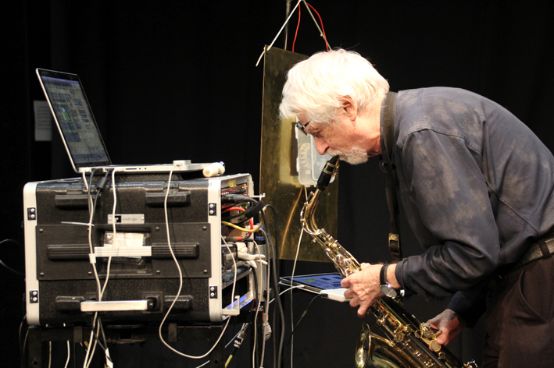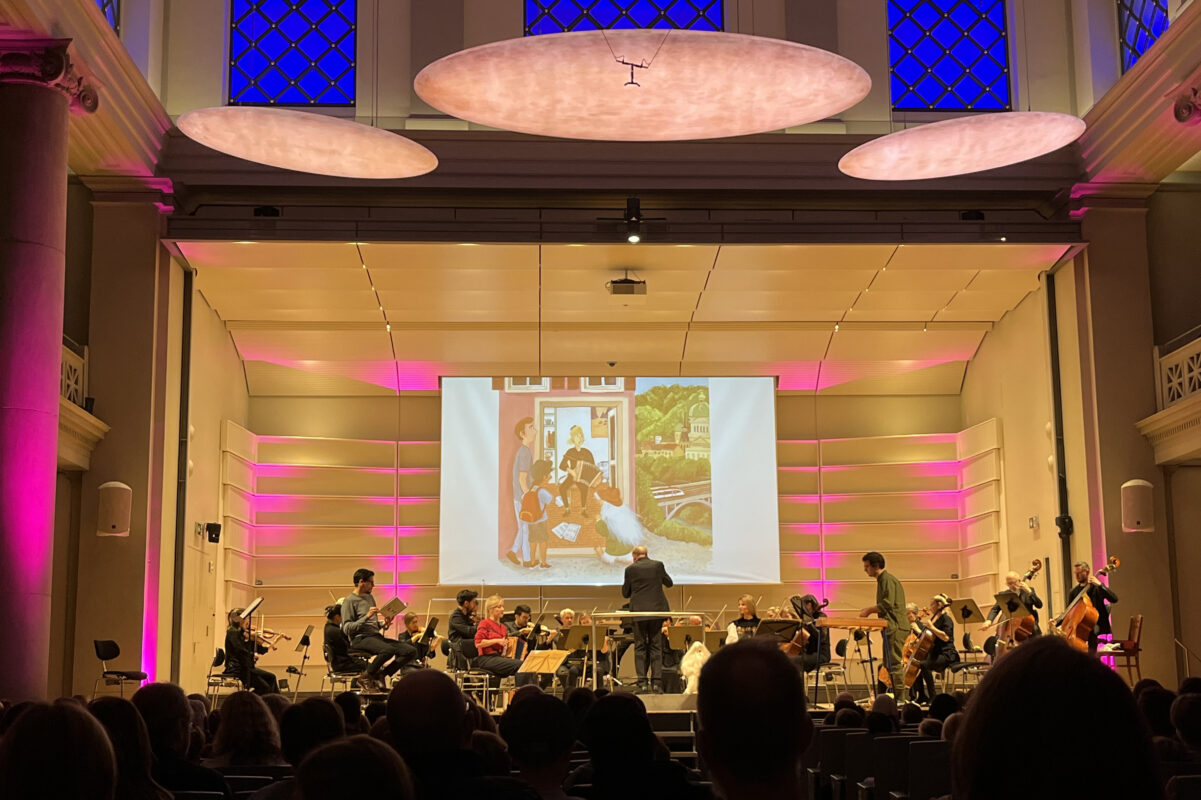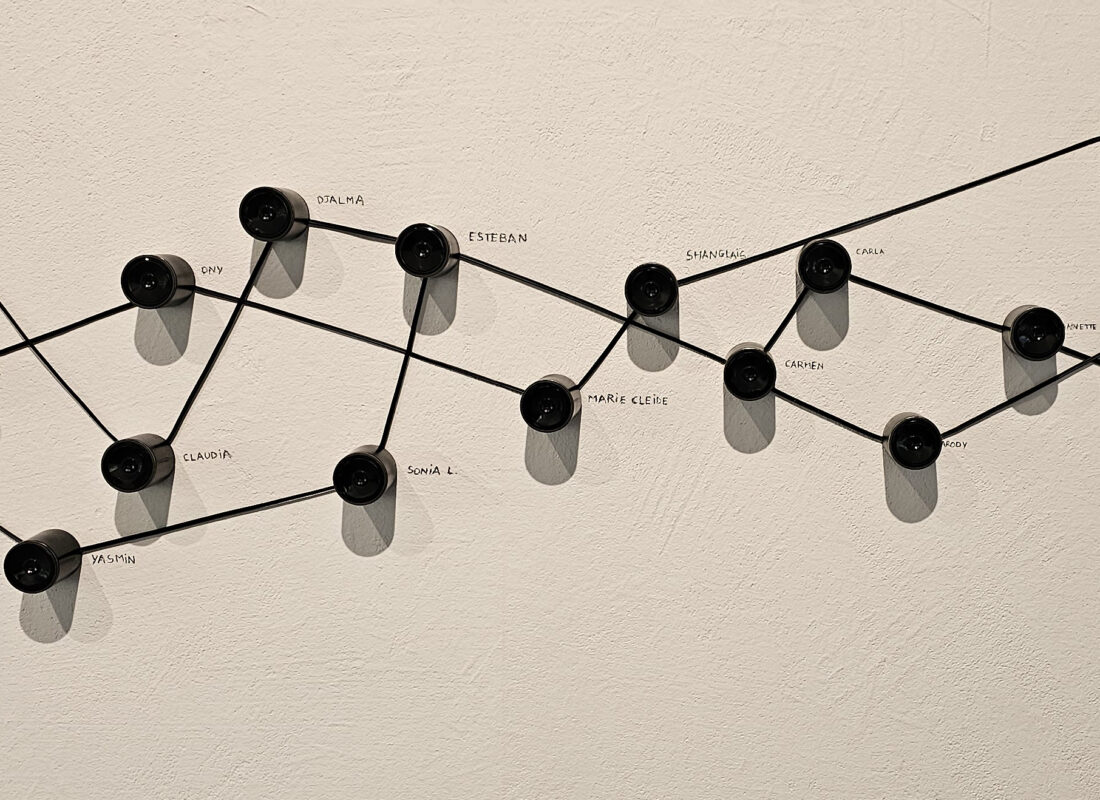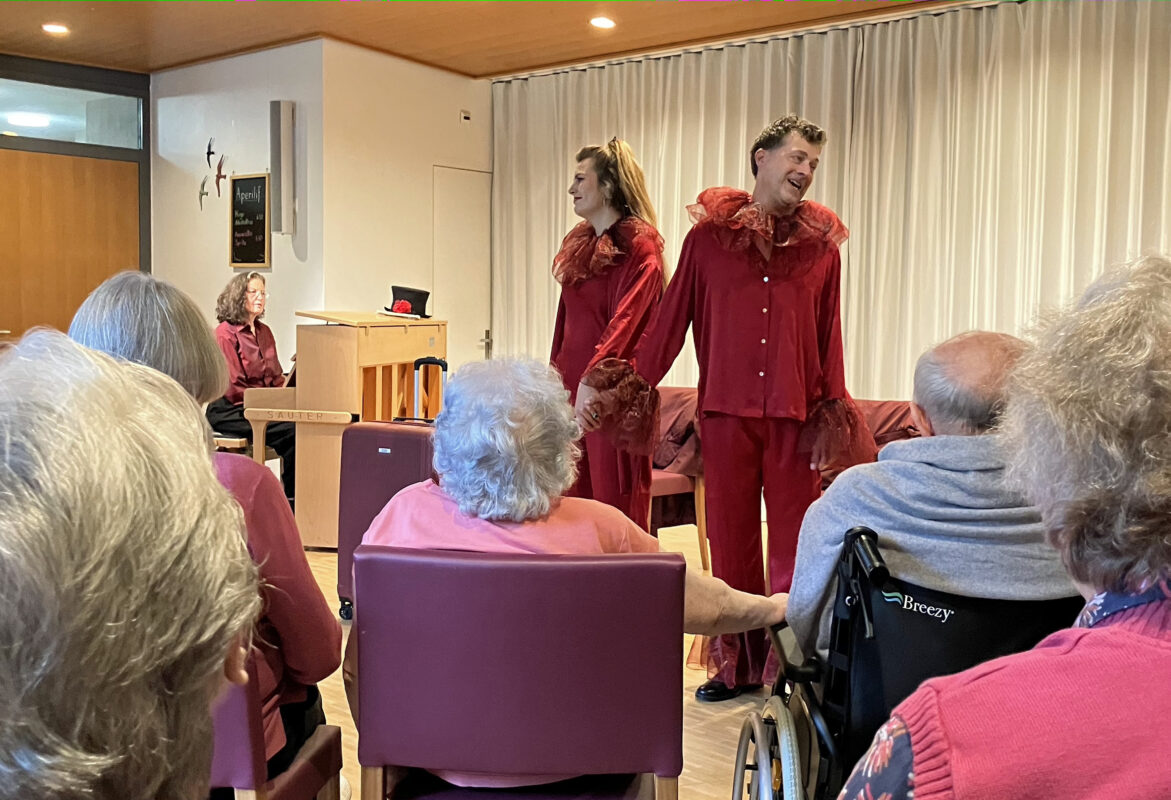Technology and historical awareness
From November 30 to December 2 last year, many questions about sound aesthetics in pop music were discussed at an international conference organized by the research department of the Bern University of the Arts (HKB).

The dedicated team around the two initiators Immanuel Brockhaus and Thomas Burkhalter welcomed the guests with a dense program that threatened to overstimulate the attention. The symposium was opened by Peter Kraut, Deputy Head of the Music Department at the HKB, followed by Thomas Gartmann, Head of Research at the HKB. The latter outlined the profile of the host university. The strategic shift from historically informed performance practice to new media had begun. Cooperation between research and teaching is central today. The label "Arts in Context" covers the latest research topic: communication between man and machine. The interfaces in this communication are the so-called interfaces, which will be discussed again and again throughout the entire duration of the symposium.
Gestural music making
The first presentation was given by Swiss jazz musician and electronics pioneer Bruno Spoerri. A good choice. Spoerri's wealth of experience was to a certain extent the central theme of the symposium and also brought to light one or two anecdotes from the "early days". He considers "sound" to be the greatest recognition parameter and therefore genre-defining. He recalled the first electronic instruments such as the Ondes Martenot. He succeeded in doing this without dwelling on nostalgia. He took a critical look at the introduction of the midi standard in 1984, which he described as cementing and sustaining the focus on keyboard interfaces. He called for more freedom for spontaneity in the transition from computer to music, a farewell to cult sounds and a return to Stockhausen. However, research is on the right track: making music with gestures is increasingly becoming possible again and his dream interface, in which a sound would only have to be thought, is perhaps no longer a utopia. Gestural music-making was also the main concern of Werner Jauk (Graz). Interfaces should be able to shape the sound through the body. Jauk goes one step further and wants to capture even body tension. He considers body information to be constitutive with regard to sound.
Virtual aging
It was widely accepted that the Midi standard could no longer meet these requirements. The engineer Lippold Haken jumped into this gap and had his Continuum Controller presented by the brilliant musician Edmund Eagan, who was familiar with it. This controller departs from the criticized standard and enables the recording of an incomparable wealth of parameters. The input is made with the fingers via a stepless touch surface. According to the developer, however, an industrial breakthrough of this technology is not yet in sight. It is still difficult to find investors outside of the stubbornly persistent Midi standard. In any case, the results of the performance demonstration were impressive. However, the complexity of operating this interface seems to be comparable to learning to play the violin. It remains to be seen whether the desire for freedom instead of control formulated by Imogen Heap and quoted by Katia Isakoff (London) can be fulfilled as a result. The fact that young people increasingly want to use tactile controllers again was also the conclusion of research by Jack Davenport (University of Central Lancashire). However, his extremely simplified "playful musical interface" was critically questioned by the audience. Not for the first time, concerns were expressed about a creeping "laziness" in the production of "music". The V:Age research project initiated by Brockhaus on the subject of "virtual aging" addresses the lack of personal connection to musical instruments outside of tactile operation in a new way: The two game designers Ruben Brockhaus and Brett Ayo (Berlin/Bern) are currently developing a virtual instrument that should have the ability to age. In the future, there should be a user-induced ageing process on the visual level as well as on the functional and audiophile level.
Restrictions due to the machine?
The conference made no secret of this: We have arrived in the digital age. The possibilities seem endless and the machines can hardly be pushed to their limits. There was disagreement about the impact of these facts on the creation of music, the ultimate creative process. While Wayne Marshall (Berklee College of Music/Harvard, Boston) is relaxed about the restrictions imposed by machine logic, Fereydoun Pelarek (Macquarie University, Sydney) even spoke of creative freedom through unlimited possibilities and the aspect of the manual was seriously discussed several times, there were dissenting voices. The techno producer Georgi Tomov Georgiev (Berlin) reminded the audience of the creative power of limitation. Quoting Jeff Mills, he spoke of slaves to computers with regard to the present. Jauk considered that the material body is becoming increasingly functionless. The problem of "decisions" was raised by Jan Herbst (Bielefeld) in his work "old guitars with new technologies". He examined the technology of "profiling". A process that measures the tonal characteristics of guitar amplifiers and their microphones and reproduces them accordingly. What would have to be decided at an early stage of production without this option now remains an open option until the last moment. Overloading the machine is ruled out, as is accidental discovery.
Sculptural design
The digital/analog discourse found its poles in the presentations by Katia Isakoff and Holger Lund (Berlin/Ravensburg). The composer Isakoff took a performative approach to the Theremini launched by the Moog company, a digital and handy reference to the legendary Theremin. In her defense, it should be mentioned that she presented a touching reappraisal of the personal relationship between theremin virtuoso Clara Rockmore and the instrument's inventor Leon Theremin as a humanistic approach to the machine and its innovation. Nevertheless, Isakoff expressed what was paraphrased in the canon: "The gap is closing." It is not the instruments that make the music anyway, but the people, she quoted Max Rudolph. More on this later. In any case, there was hardly any contradiction. This changed radically with Lund's contribution. In his presentation "New sound aesthetics through post-production mastering and vinyl cutting", he spoke of a post-digital phenomenon and the associated re-analogization. A decisive influence on the end product in studio art through analog processes and corresponding craftsmanship can be discerned. The sound presence is sculpted with the help of distortion. In response to the question of whether this audiophile confrontation was even taking place in the audible range, he gave a devastating answer for the current music industry: "The differences are striking, the only question is whether we can still perceive them. Our listening habits have already been shredded by the omnipresence of digitalization and the associated mobile playback devices. In interviews with the relevant mastering artists, Lund has learned that transparency will no longer be the aesthetic of the future, but rather the coloration and elaboration of an individual "sonic stamp".
What does "future" mean?
A definition, which was debated at this symposium, was a long time coming. Although there was agreement on the term "sound" and its adequate translation into "Klang", the meaning of the term "future" was only brought up in the contribution by philosopher Robin James (UNC Charlotte). While the new and innovation were still regarded as the epitome of the future in the modern era, this has changed dramatically under neo-liberalism. Speculation and investment now defined the future. James speaks of the future as a consequence of success. For music, this meant a loss of narration. The dramaturgical design is undergoing a radical change. In the struggle for attention, for example, the climax appears right at the beginning. The essential struggle for success is also gradually manifesting itself in our bodies. It is increasingly seen as an investment object. Investing always means taking risks. For the industry, it is important to weigh up these risks. Up-and-coming capital goods are exposed to the phenomenon of "gentrification". At this point, James brings the controversial gender issue to the podium. She attributes investment in the female body to precisely this phenomenon: "Investment in the female body is the human gentrification". Marie Thompson (University of Lincoln) also addresses the same issue. In her lecture, she presented a series of devices that enable pregnant women to listen to prenatal music. The investment in the unborn child is intended to optimally prepare it for a success-oriented society. A corresponding baby playlist has of course already been compiled. The pinnacle of high culture is presented in a canon ranging from Mozart to Queen. An analysis of which music stimulates which prenatal "learning behavior" is also provided. Thompson considers production and reproduction to be decisive for capitalism. She describes production without reproduction as the ideal case in this system. A train of thought that can take on devastating proportions when applied to the female body. She appeals for a new awareness. The focus should not be on the products and their processes, but on the framework conditions in which they are created. Annie Goh (Goldsmith University of London) followed on from this and analyzed the Japanese mass phenomenon "Hatsune Miku". Virtual female pop stars are programmed and marketed by users of the corresponding online platform. This "crowdsourced creativity" leads to the death of the author and thus to the death of reality. The central concern of Thompson's analysis is the use of the virtual voice of women. Here she draws parallels with the Western world. The virtual female voice in the public sphere is already omnipresent. The question is not only how it will be used in the future, but also who will decide. The technologization of the female voice could therefore play an important role in the gender debate of the future.
Learning machines
Virtualization was also the subject of the highly exciting contribution by the two media artists Michael Harenberg and Daniel Weissberg (Bern). They referred to the problem of "big data". The computer-aided handling of vast amounts of data makes it possible to examine human behavior. Under the term "machine learning", programs are made to appear intelligent. Google, for example, succeeded in defeating its human opponent in the centuries-old board game Go, achieved by "machine learning" in the form of playing against itself thousands of times. Attempts to create a machine-generated number one hit in the music industry are already underway (see Antwerp Research Institute for the Arts). Is it not the people who make the music after all? Harenberg and Weissberg immediately provide the telling comment: "It's not funny." What is being used here is devoid of any human capabilities and is first and foremost an incredibly fast data processing system. According to Harenberg and Weissberg, this doesn't have much in common with "intelligent". The big data application displaces the hobbyist and can only be used by big industry. Digitalization makes no contribution to the democratization of the music market.
There was disagreement among the speakers on this point. Jan Herbst, for example, spoke of digital democratization. The possibility of using virtual equipment and its low costs thanks to online availability should ensure equal opportunities. Problems with copyright management and barriers to entry in terms of payment methods were not discussed. Harenberg and Weissberg appealed to universities to take their responsibility in dealing with these phenomena. The focus of their programs should not be on the technological aspects, but rather on the subcultures that still exist.
Conclusions
Conclusion of the densely programmed event: The symposium shone first and foremost with a high level of historical awareness. However, there was not much talk of the future. Scientists are still unable to look beyond contemporary history. The outlook can be located in the area of creative ideas, but is hardly ventured. That the future will be an electronic one, however, remained out of the question. There were no contributions with an acoustic vision. The only hint in this direction came from Harenberg and Weissberg: "The touring guitar does not exist in electronic form." As a harmonious conclusion, the opening guest had his say again. This time in a musical performance. Bruno Spoerri proved with a winking historical awareness that the search has no end and that the future will definitely bring something new.








